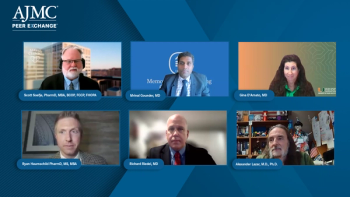
Study Examines Telehealth Use Disparities Among Prostate Cancer Survivors
Most prostate cancer survivors surveyed reported feeling that telehealth cannot fully replace in-person visits, with perceptions varying significantly based on education level.
The use of telehealth services has grown dramatically since the beginning of the COVID-19 pandemic, but a recent study from
Telemedicine proves especially useful in instances where in-person care is unavailable or not feasible for patients. In regard to cancer survivors, the authors noted that previous studies point to the major benefits individuals experience from increased access to health providers, specialists, and services. However, past studies have also uncovered meaningful distinctions between patient engagement with telehealth connected to patient age, sex, race/ethnicity, whether they live in a rural or urban area, as well as socioeconomic status.
Researchers surveyed patients who participated in the North Carolina Prostate Cancer Comparative Effectiveness & Survivorship Study (NC ProCESS), which identified patients through the Rapid Case Ascertainment system of the North Carolina Central Cancer Registry from 2011 to 2013. A decade later, these survivors were asked about their use and perceptions of telehealth services during annual follow-up surveys.
The cohort included patients across the state of North Carolina, had a mean age of 73 years, 25.1% of the individuals were Black, 28.8% had educational experience below the high school level, and 44.1% were self-reported as living in a rural area.
In total, 487 of the potential 759 prostate cancer survivors were successfully contacted and completed their surveys (64.2%). At the time of these surveys, 139 (28.5%) reported having used telehealth. Those who were younger than 65, Black, had educational experience at the college level, and lived in more urban or mixed areas were more likely to use these services.
Only 10% of survivors stated they felt their telehealth care was comparable to that of an in-person visit; however, 55% believed that telehealth was a good resource for more basic forms of care or an initial consolation. Coming out of the pandemic, 16.4% stated they were more likely to use telehealth compared with 12.3% who said they were feeling less likely.
Differences in telehealth engagement were minimally associated with education level (≤ high school vs any college; risk ratio [RR], 0.65; 95% CI, 0.42–1.01), as was feeling less likely to use telehealth since COVID began (RR, 0.39; 95% CI, 0.20–0.77). Among survivors with any degree of college education, 20% reported being more likely to use telehealth post-pandemic vs only 8% of those with a high school education or less.
Residents of rural areas surveyed between December 2020 and December 2021 reported lower telehealth use compared with those living in urban or mixed areas (RR, 0.62; 95% CI, 0.40–0.96); however, this changed by the time survivors were surveyed between January and November 2022 ([RR, 1.16; 95% CI, 0.64–2.12]; [overall RR, 0.76; 95% CI, 0.54–1.08]).
Researchers theorized that access to the internet and technology, as well overall comfort level with these devices, can explain the present disparities in telehealth uptake. Overall, the survivors’ consideration of telehealth and their inclinations towards using these services varied significantly by level of education.
The authors noted multiple limitations of this study, including that data was gathered from a single state and the study experienced a level of absence with validated surveys on perceptions of telehealth. No information was collected about perceptions on specific types of telehealth providers or visits, and perceptions of cancer survivors could be affected by the care and appointments that were available and provided to them, the authors explained. Researchers also noted that they surveyed a group of long-term, localized survivors who may carry differing views compared with recently diagnosed individuals or those with other types of cancer.
“Telehealth increases access to care and has the potential to reduce cancer disparities, but most cancer survivors do not believe that telehealth can fully replace in-person visits,” the authors concluded. “Differences in survivor perceptions of telehealth by education level provide insights on disparities in telehealth uptake during the COVID-19 pandemic and a potential target for interventions to reduce these differences.”
Reference
Chen LW, Usinger DS, Katz AJ. Telehealth use and perceptions among prostate cancer survivors. Cancer Med. Published online July 16, 2023. doi:10.1002/cam4.6328
Newsletter
Stay ahead of policy, cost, and value—subscribe to AJMC for expert insights at the intersection of clinical care and health economics.






































